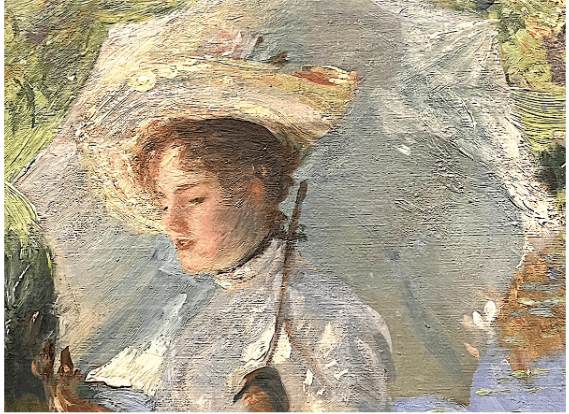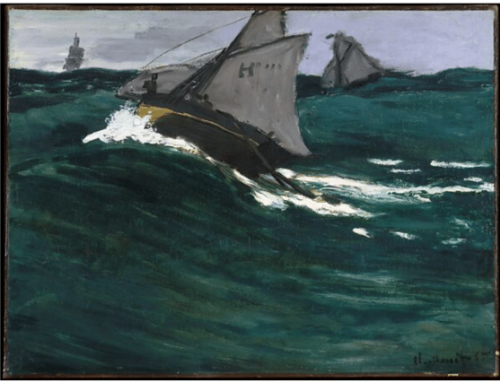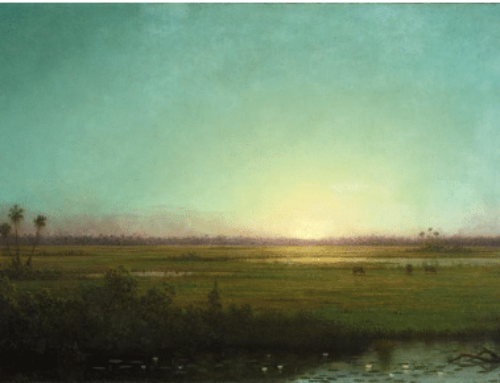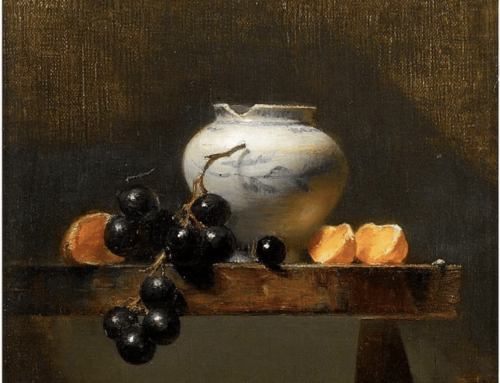“Is Mr. Sargent in very fact an American painter?” asked American novelist Henry James in the pages of Harper’s Bazaar in October, 1887. Sargent had recently moved to Britain from France and was scouting Boston and New York for much-needed portrait commissions. James advised forgiveness for Sargent’s conspicuous Frenchness remarking, “It sounds like a paradox, but it is a very simple truth, that when to-day we look for ‘American art’ we find it mainly in Paris. When we find it out of Paris, we at least find a great deal of Paris in it.”
Indeed, there is quite “a great deal” of “Paris” in the American artist’s work during this period (c. 1885-1889) Sargent had met Monet in 1874, but just a few months before James’ essay came out 13 years later, Sargent for the first time wholly embraced Impressionism while visiting Monet at his home in Giverny. Monet’s style but also his compositions and motifs influenced him greatly.
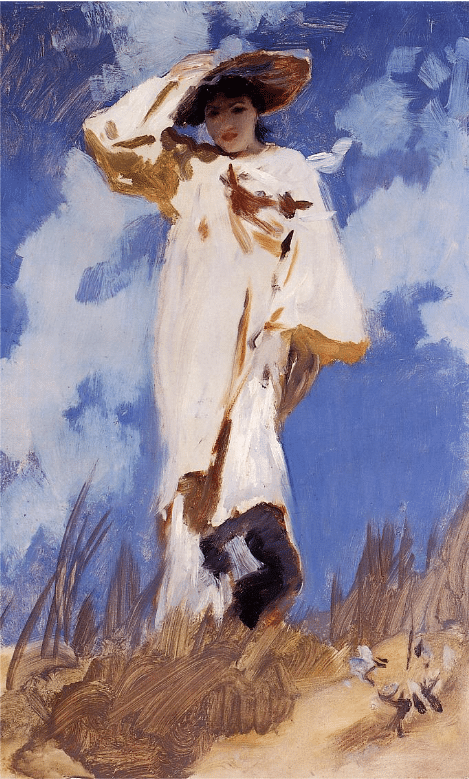
John Singer Sargent, A Gust of Wind oil on canvas, 61.6 x 38.1 cm, (c 1886-7),
It’s evident in Sargent’s virtuoso Gust of Wind (above) from about 1886-7, which is often compared with Claude Monet’s La Promenade (below), painted in 1875.
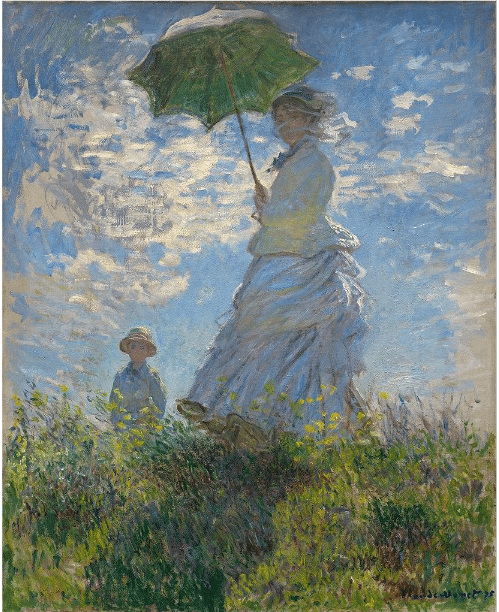
Woman with a Parasol – Madame Monet and Her Son, sometimes known as The Stroll (French: La Promenade) 1974
Monet reprised the theme in 1886, the same year as Sargent’s “Gust of Wind” painting, substituting his future stepdaughter, Suzanne Hoschedé, as the model, likewise wearing white and carrying a parasol in the open summer air. Both artists used the same very low viewpoint of the figure, rendered in light, spontaneous brushwork against splashes of color.
In all of these paintings, the woman’s garments (be they dress, veil, hat or scarf) are blown by the wind, as is the figure’s billowing white dress. In the early (1874) and later (1886) Monets, the waving grass of the meadow is echoed by the green underside of the parasol.
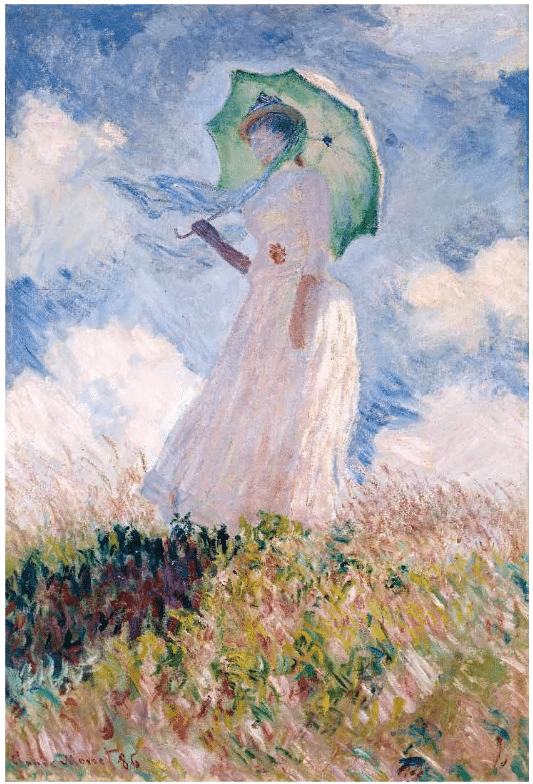
Woman with a Parasol, Turned to the Left, Oil on canvas, 131 x 88 cm, 1886, Musée d’Orsay, Paris
Two years later, Sargent painted A Morning Walk. In this painting, “Sargent’s younger sister Violet, age eighteen, wears a white cotton dress in the popular ‘polonaise’ style, which featured an overskirt drawn up and gathered at the hips,” notes the Museum of Fine Arts, Boston. “Set against a background of water and a green grassy bank, she sparkles in the sunlight. Sargent was in his most Impressionist phase at this point in his career, in regular contact with his friend Claude Monet. Rather than using light to dematerialize the figure, as Monet had done, Sargent employed it to define his sister’s form.”
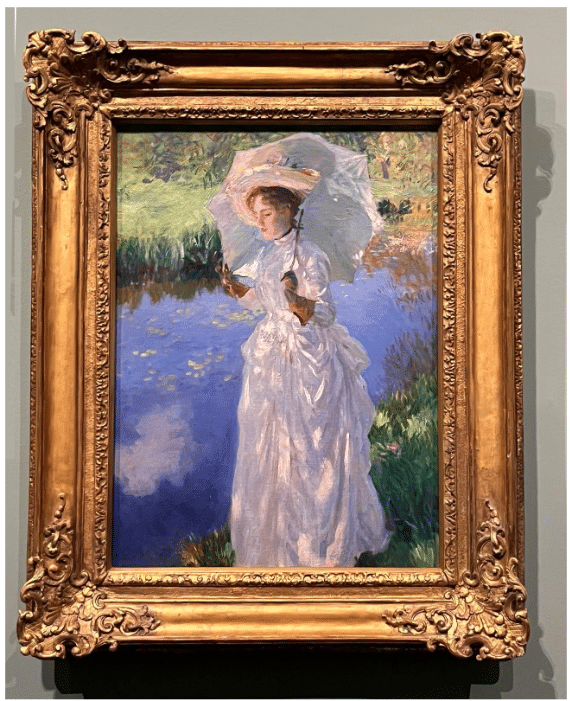
John Singer Sargent, The Morning Walk, oil on canvas, 1888.
“Light strikes the white fabric of her gown like a prism; it splinters creating broken colors. Myriad shades of delicate blue, pink, and violet, with bright white highlights, create a dazzling effect. The shadows on the underside of her umbrella are caught in splashes of blue, green, yellow, and pink.”
What a beautifully productive period of creativity for both artists.
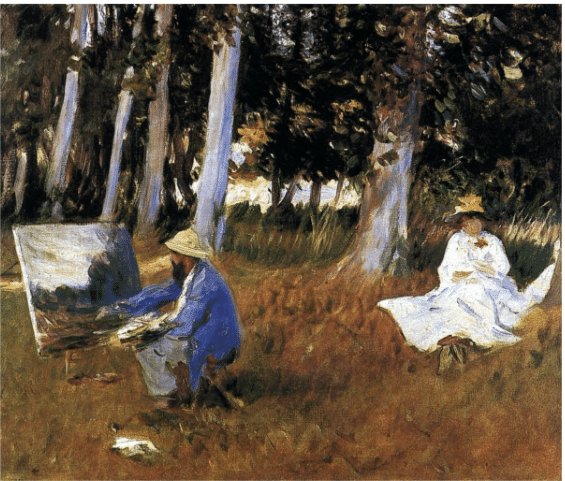
John Singer Sargent, Claude Monet, Painting at the Edge of a Wood, 1887, Oil on canvas, 53 x 64 cm. Tate Gallery, London
All these women in fields wearing white dresses and parasols got me thinking of Helena Bonham Carter in the Merchant Ivory film Room with a View. Think there’s any connection?
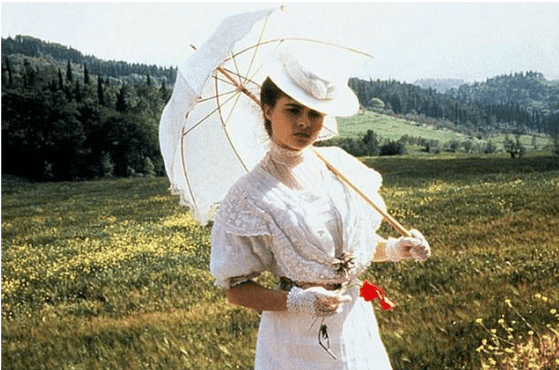
Helena Bonham Carter in the Merchant Ivory film Room with a View.
I promised a closer look, so here are some instructive detail shots of Sargent’s Morning Walk, in from the Boston MFA’s recently (Jan. 15) wrapped up exhibition Fashioned by Sargent. photographed by Lindy Walch. It’s always exciting, for oil painters especially, to be able to study such daring, “bravura” brushwork, don’t you think?
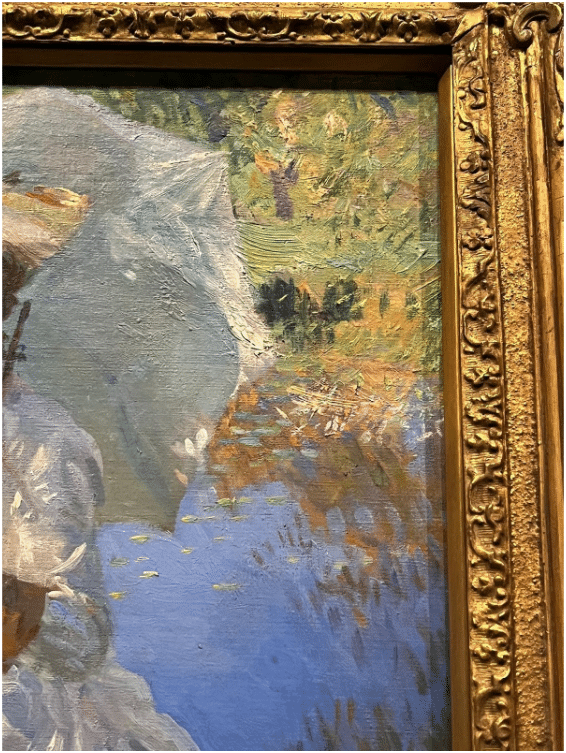
Wild color splashes and stroke variety here in the upper righthand corner of the painting.
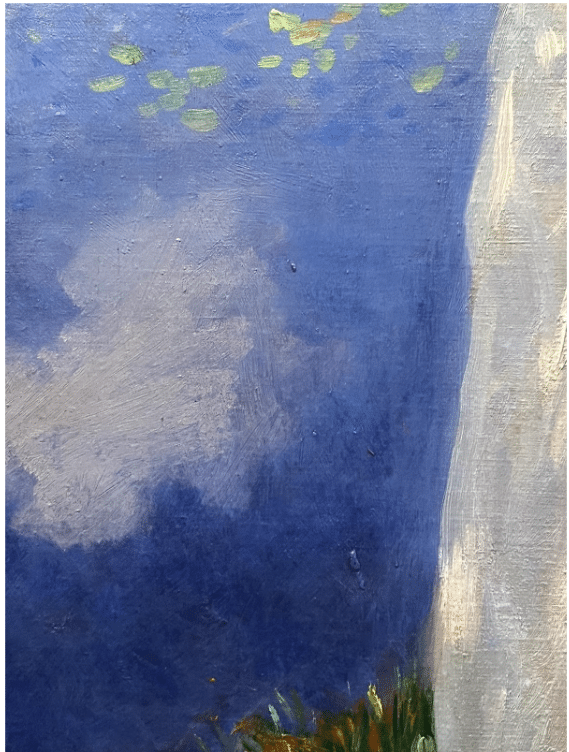
If someone told me this bit of blue and white came out of a Monet, I’d believe it no problem.
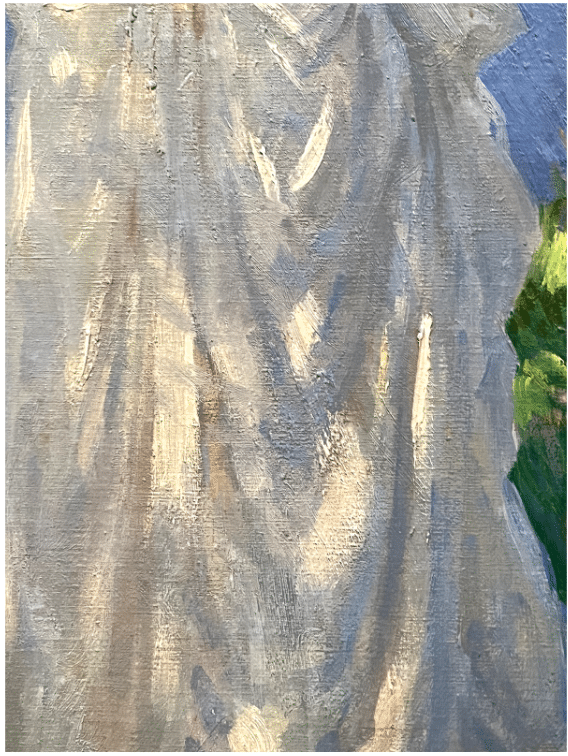
Look at all those different whites and grays!
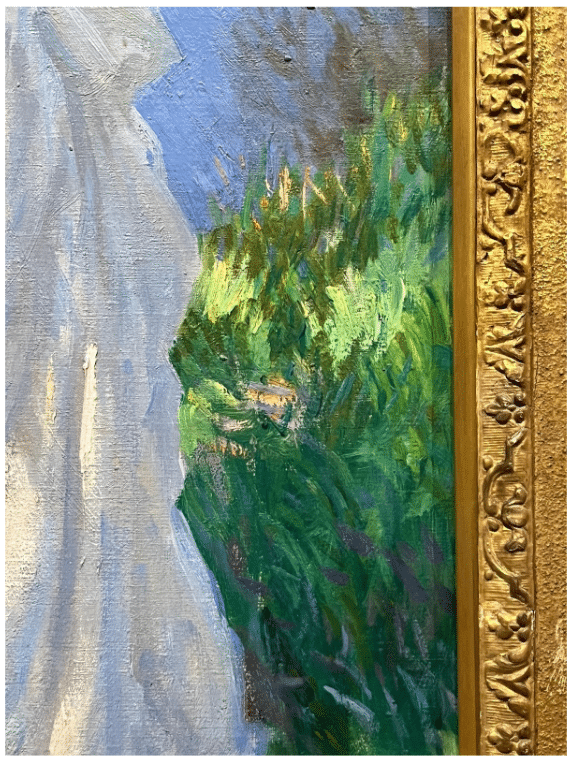
Wonderful, vigorous brushstrokes in the grass; look how the areas of light and shadow aren’t blended on the canvas; Sargent mixed them on his palette first then laid them down and left them alone.

